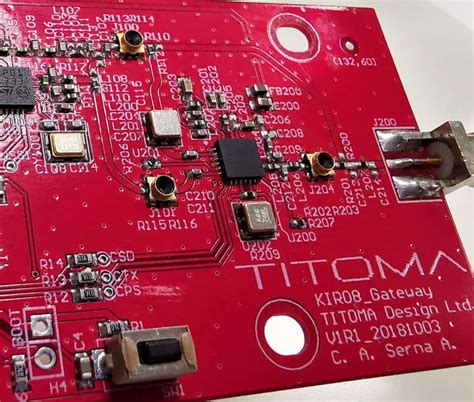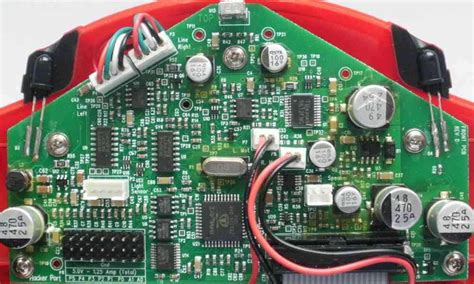Understanding THT and SMT in Modern Electronics Manufacturing
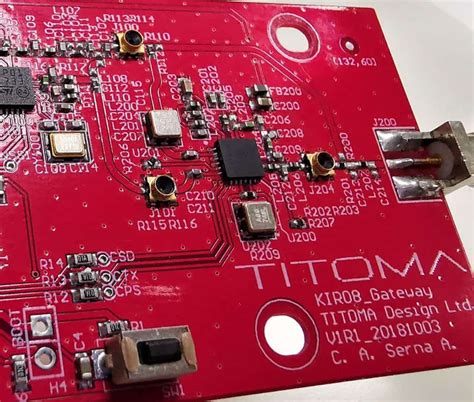
Key Takeaways
Understanding the distinctions and applications of Through-Hole Technology (THT) and Surface Mount Technology (SMT) is crucial for professionals in the electronics manufacturing sector. Both techniques play significant roles in pcb assembly processes, influencing how electronic devices are constructed.
THT involves inserting leads of components into drilled holes on a circuit board, which makes it easier to handle larger components. This method is often preferred for its robustness, particularly in applications requiring greater mechanical strength.
On the other hand, SMT allows for much denser packing of components on a circuit board by mounting parts directly onto the surface, thereby optimizing space and improving performance. This technology is increasingly utilized due to its efficiency and suitability for automation.
| Technology Type | Advantages | Common Applications |
|---|---|---|
| THT | Greater mechanical strength; easier prototyping | Power supplies; connectors |
| SMT | Higher density; faster assembly | Consumer electronics; telecommunications |
As the industry evolves, understanding which technology to apply in specific situations can lead to more effective production techniques. Each approach has its own advantages which can significantly impact the overall performance and reliability of end products.
"Choosing between THT and SMT should be based on the individual requirements of your project."
This knowledge enhances decision-making during the pcba (printed circuit board assembly) process, ultimately influencing the efficiency and success of modern electronic manufacturing initiatives.

Introduction to THT and SMT in Electronics Manufacturing
In the realm of modern electronics manufacturing, Through-Hole Technology (THT) and Surface Mount Technology (SMT) play pivotal roles in the production of high-quality electronic devices. THT involves the insertion of component leads through drilled holes in a printed circuit board (PCB), followed by soldering on the opposite side to establish a solid connection. This technique has been widely appreciated for its strength and durability, making it particularly suitable for components that experience physical stress. Conversely, SMT represents a more contemporary approach where components are mounted directly onto the surface of a PCB, enabling more efficient use of space and the ability to accommodate smaller, more complex circuits. The integration of SMT has revolutionized pcb assembly processes by reducing assembly time and allowing for higher component density. As manufacturers navigate the balance between these two techniques, understanding their distinctive characteristics is essential for optimizing production and enhancing product reliability. Overall, both THT and SMT have unique advantages that contribute significantly to the effectiveness of pcba, ultimately influencing the performance and efficiency of electronic devices in today’s fast-evolving technological landscape.
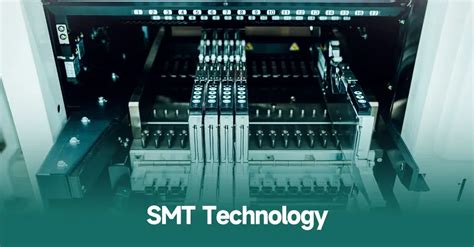
Detailed Overview of Through-Hole Technology (THT)
Through-Hole Technology (THT) remains a fundamental technique in the realm of electronics manufacturing, especially in the context of pcb assembly. This method involves inserting component leads through holes drilled in printed circuit boards (PCBs) and then soldering them to pads on the opposite side. One of the primary advantages of THT is its mechanical strength; components secured through these holes are more robust, making them ideal for applications where durability is crucial. Moreover, THT is particularly effective for larger components that may not fit well with surface-mounted alternatives.
In addition to its physical attributes, THT is advantageous in certain applications due to its ability to accommodate various component types, including headers, connectors, and larger power components. This versatility ensures that it plays a significant role in mixed technology assembly processes where products require both THT and Surface Mount Technology (SMT).
However, the THT process can be more labor-intensive compared to SMT, which limits its usage in high-volume production environments where speed and efficiency are critical. Despite this drawback, it is favored in low- to medium-volume applications and repair scenarios due to the ease with which components can be replaced or upgraded.
Ultimately, understanding THT’s strengths provides a clear view into its enduring relevance within the sphere of pcba practices as manufacturers strive for balance between innovation and traditional methods. As technology continues to evolve, THT’s role in producing reliable electronic devices highlights its persistent value alongside emerging techniques.
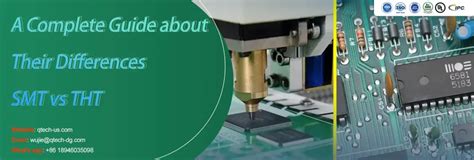
Comprehensive Guide to Surface Mount Technology (SMT)
Surface Mount Technology (SMT) has transformed the landscape of pcb assembly by allowing for more compact designs and increased component density. Unlike traditional methods, SMT involves mounting electronic components directly onto the surface of printed circuit boards (PCBs), which enhances efficiency in manufacturing. This method is characterized by its use of smaller components, enabling a reduction in weight and size, which is essential in today’s electronics landscape where portability is often prioritized.
One of the hallmarks of SMT is its compatibility with automated assembly processes. This automation significantly reduces labor costs and production time while minimizing the potential for human error. The precision involved in PCBA (printed circuit board assembly) through SMT allows manufacturers to achieve high yields, resulting in maximized productivity and minimized waste.
Moreover, the flexibility offered by surface mount technology facilitates a diverse range of applications across various sectors—from consumer electronics to telecommunications and automotive systems. The ability to easily modify designs means that manufacturers can quickly adapt to new innovations and market demands, making SMT indispensable in modern electronics manufacturing.
In summary, as technology continues to evolve, Surface Mount Technology’s role in enhancing manufacturing efficiency, product reliability, and flexibility cannot be overstated. Its integration within the broader spectrum of electronic production processes underscores its significance in developing sophisticated electronic devices that cater to emerging needs.
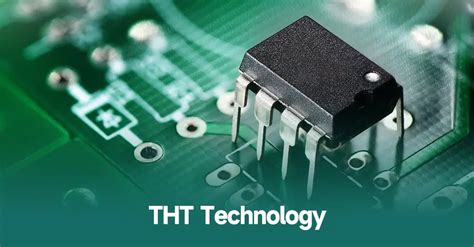
Comparing THT and SMT: Processes and Techniques
When examining Through-Hole Technology (THT) and Surface Mount Technology (SMT), it is important to explore their distinct processes and techniques that play crucial roles in pcb assembly. THT involves the insertion of component leads through holes drilled in a printed circuit board (PCB) and is typically soldered on the opposite side. This method is advantageous for providing strong physical connections, making it suitable for components requiring durability, such as connectors and heavy components. On the other hand, SMT allows components to be mounted directly onto the surface of a PCB, eliminating the need for drilled holes. This approach not only minimizes space but also enables automated assembly processes that surpass THT in speed and efficiency.
The contrast between these two technologies highlights their respective application areas. For instance, while THT is often favored in prototyping or in products that endure extreme physical conditions, SMT has become predominant in high-volume production due to its ability to support smaller, more compact designs critical for modern electronic devices. Moreover, when integrated into efficient pcba processes, both technologies can be complementary; utilizing THT for certain robust components while leveraging SMT’s capabilities for mass production can optimize overall performance. Understanding these differences is vital for manufacturers looking to advance their electronics offerings while maintaining high standards of quality and efficiency.
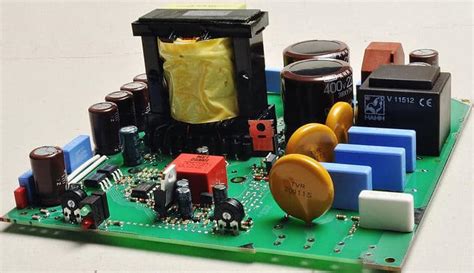
Advantages of THT and SMT in Modern Manufacturing
The advantages of Through-Hole Technology (THT) and Surface Mount Technology (SMT) play a pivotal role in the realm of modern electronics manufacturing. Each technology boasts unique benefits that cater to various needs in the production of electronic devices. THT is renowned for its durability and mechanical strength, making it ideal for applications that require robust connections, such as power supplies and high-stress environments. This characteristic significantly enhances the longevity and reliability of electronic components in demanding applications. Conversely, SMT offers remarkable efficiency in pcb assembly as it allows for a higher density of components on a single board. This increased density not only optimizes space but also reduces material costs while improving performance due to shorter signal paths. Furthermore, SMT facilitates automated assembly processes, resulting in faster production rates and greater consistency, which is crucial for maintaining high-quality standards in pcba. Ultimately, the choice between THT and SMT depends on specific project requirements; however, both technologies continue to drive innovation and advancements within electronics manufacturing, ensuring that products are both efficient and reliable.
Applications of THT and SMT in Electronic Devices
In the realm of modern electronics manufacturing, THT (Through-Hole Technology) and SMT (Surface Mount Technology) play critical roles in the pcb assembly process, enabling the development of a wide array of electronic devices. THT is primarily used for components that require robust connections, making it suitable for applications like power supplies, industrial equipment, and prototyping, where durability amidst physical stress is essential. On the other hand, SMT excels in creating compact and high-density circuits found in everyday devices such as smartphones, laptops, and consumer electronics. This technology allows for automated manufacturing processes that enhance speed and accuracy while reducing production costs. The versatility of both technologies also enables manufacturers to combine them effectively within a single device, leveraging the benefits of each. For instance, while SMT handles the bulk of electronic components due to its efficiency in space-saving designs, THT may be utilized for larger parts like connectors or heat sinks that necessitate stronger mechanical support. As a result, both THT and SMT significantly contribute to optimizing performance and reliability in modern electronic devices, reflecting their indispensable nature in a competitive market driven by technological advancements. The synergy between these technologies not only fosters innovation but also sets the foundation for producing efficient electronic solutions tailored to diverse needs in industries ranging from automotive to telecommunications.
Future Trends in THT and SMT Technologies
As the electronics manufacturing landscape continues to evolve, both THT (Through-Hole Technology) and SMT (Surface Mount Technology) are adapting to new demands and innovations. The increasing complexity of electronic circuits is driving the need for more efficient techniques in pcb assembly. Future trends indicate a greater integration of automation in the manufacturing processes of both THT and SMT, further enhancing accuracy and reducing production time. Additionally, advancements in materials technology are likely to support the development of smaller, more compact components that can benefit from surface mounting, paving the way for ultra-thin electronic devices. The emerging focus on sustainability is also expected to influence production methods, leading to greener practices in pcba (Printed Circuit Board Assembly). As these technologies converge, manufacturers may find new synergies that combine the strengths of both THT and SMT, allowing for inventive solutions tailored to specific applications in areas such as consumer electronics, automotive systems, and medical devices. The future will undoubtedly bring exciting developments as the industry strives towards greater efficiency, quality, and sustainability in electronics manufacturing.
Conclusion: The Role of THT and SMT in Advancing Electronics
In the dynamic landscape of electronics manufacturing, the integration of Through-Hole Technology (THT) and Surface Mount Technology (SMT) has been pivotal in enhancing the efficiency of pcb assembly processes. Both technologies serve distinct but complementary roles in creating advanced electronic devices, catering to a wide range of applications from consumer electronics to industrial machinery. THT allows for robust connections, making it ideal for components experiencing mechanical stress, while SMT offers a higher density of components on pcba, enabling miniaturization and cost-effective production. As industries strive for greater efficiency and performance, balancing these technologies becomes imperative. The choice between THT and SMT can significantly impact manufacturing costs, reliability, and overall device performance. Recognizing the strengths of each method is essential for engineers seeking to optimize their designs. As we look to the future, continued innovation in THT and SMT processes will undoubtedly play a key role in advancing electronic capabilities, paving the way for smarter and more efficient technologies that meet the ever-evolving demands of the market.
Conclusion: The Role of THT and SMT in Advancing Electronics
In the realm of modern electronics manufacturing, both Through-Hole Technology (THT) and Surface Mount Technology (SMT) play crucial roles in the production of efficient and reliable electronic devices. Each method possesses unique characteristics that cater to different needs within the industry’s expansive landscape. THT is appreciated for its robustness and ease of repair, making it a preferred choice for more substantial components or applications requiring durability. Conversely, SMT is celebrated for its ability to facilitate high-density PCB assembly or PCBA, enabling manufacturers to design smaller and more lightweight devices without compromising performance.
The integration of both technologies allows manufacturers to optimize their production processes, ensuring that specific component requirements are met while maximizing overall efficiency. As technology continues to advance, understanding the synergies between THT and SMT will be essential in driving innovation in electronic device design, particularly in an era where miniaturization and increased functionality are paramount. The ongoing development of both techniques demonstrates their vital role in producing modern electronics that continue to revolutionize our daily lives.
FAQs
What is THT in electronics manufacturing?
THT, or Through-Hole Technology, is a method of mounting electronic components through holes on a printed circuit board (PCB). This technique involves inserting the leads of the components into the holes and soldering them on the opposite side. THT is known for its sturdy connections and reliability, especially in applications requiring durability.
What advantages does SMT offer over THT?
Surface Mount Technology (SMT) allows for components to be mounted directly onto the surface of a PCB, eliminating the need for drilling. This enables higher component density, smaller PCB sizes, and often lower manufacturing costs. Additionally, SMT is typically faster and more automated, making it ideal for mass production.
Can THT and SMT be used together?
Yes, many modern electronic devices utilize a combination of both THT and SMT techniques. This hybrid approach leverages the strengths of each method; for instance, critical connections may be made with THT while less critical components are mounted using SMT, optimizing performance and cost.
What are common applications for THT?
THT is particularly favored in rugged applications such as military equipment, automotive electronics, and industrial controls. These environments often require robust solder joints that can withstand mechanical stress.
How do PCB assembly techniques influence final product quality?
The choice between THT and SMT, as well as how they are combined during PCB assembly (PCBA), significantly impacts performance characteristics such as thermal management, signal integrity, and overall reliability of the final product.

